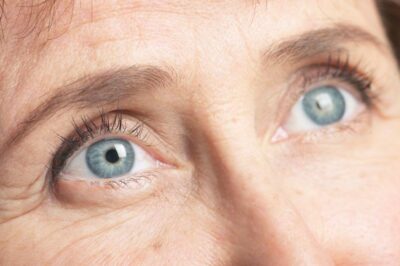Cataracts: Everything You Need to Know About This Vision Problem
What is a Cataract?
Cataracts are one of the most common causes of vision loss. They result from a loss of transparency in the crystalline lens, the eye's natural lens. The crystalline lens naturally loses its transparency due to aging, leading to a decrease in visual acuity. While most cataracts are age-related, other types exist, such as congenital cataracts (present from birth), secondary to certain diseases (uveitis, diabetes), medications (corticosteroids), or eye trauma.
Different Types of Cataracts
Senile Cataract
Senile cataracts are a chronic disease that occurs when the normally developed lens substance loses its transparency due to degenerative changes. In terms of frequency, it is the most significant and common form (90% of cataracts). It manifests after the age of 60 and is a very common cause of visual impairment in the elderly. Most age-related cataracts develop gradually.
It is generally bilateral and asymmetrical, but sometimes it is only unilateral. The state of development can be different in both eyes, so one eye may still have almost normal vision, while the other eye may be reduced to a simple perception of light.
Senile cataracts are characterized by a decrease in visual acuity, which is the main symptom, as well as myopia, monocular diplopia, photophobia, and the vision of colored halos around a light source due to light scattering. Diagnosis is essentially clinical, and the only curative treatment is surgery.
Secondary Cataract
Secondary cataracts, also known as posterior capsular opacification, are the most frequent complication after cataract surgery. They occur in 3 to 50% of cases 5 years after cataract surgery and result from the migration and proliferation of epithelial cells in the posterior capsule, leading to a decrease in visual acuity.
Cataract surgery involves removing the clouded lens, leaving the capsule that contains it, and replacing it with an intraocular lens. The lens capsule is a thin, transparent membrane that surrounds the lens. To remove the cataract, a window is made in the anterior part of the capsule, leaving the posterior capsule intact to allow for lens implantation. This capsule can become opaque months or years after cataract surgery, resulting in a secondary cataract.
Traumatic Cataract
Severe eye trauma can cause damage to the lens and cause a cataract in the injured eye.
However, it is also important to consider that the blow or injury may have affected other ocular structures, causing more or less serious damage.
Hence the importance of evaluating the extent of damage suffered by the eye in such cases, as this will determine the type of surgery to be performed, as well as the complications that may occur during or after the operation.
In the case of traumatic cataracts, rather than symptoms, it is necessary to discuss the extent of the lesions produced in the eye, which are classified into three groups:
- Without associated lesions: Lens opacity begins at the back in the form of a fern or rosette, but in some cases it can progress and the lens becomes completely opaque and white;
- With other non-penetrating lesions: Lesions can be very different: internal hemorrhage, iris displacement, retinal tear or detachment, optic nerve atrophy, zonule alteration, posterior pole scar, etc;
- Penetrating wounds: When caused by a sharp object or if the eyeball has ruptured as a result of trauma;
Cataracts in Children
Many people believe that cataracts only affect the elderly. However, children can also suffer from cataracts. Childhood cataracts and age-related cataracts are both an opacification of the eye's lens, which can lead to blurred vision or even blindness.
In adults, cataracts usually appear many years after vision has developed correctly, so after removing the cataract, the person can in many cases regain good vision. Since children's vision is still developing, and this process does not stop until the age of 8 to 10 years, if a childhood cataract is not treated, it can lead to long-term vision problems. This is why early detection and treatment can prevent permanent vision loss in children with cataracts.

Who is Affected by Cataracts?
Cataracts affect men and women equally and are a disease that develops over time (progressive). It is very common, is not contagious, is not painful, does not irritate the eyes, and is not due to prolonged eye strain. However, in the absence of specific treatment and in severe cases, it can completely cover the pupil and cause blindness.
EXPRESS QUOTE
Would you like more information?
Your health, our priority.
Request your free quote
Progression of Cataracts
Cataracts tend to develop progressively in one or both eyes: initially, they do not cause particular vision problems, but later they begin to impair it. In an eye affected by a cataract, the lens, having become opaque, partially blocks and distorts the passage of light rays, significantly reducing vision and making images opaque, blurry, and fuzzy.
As the disease progresses, the pupil loses its black color and becomes increasingly gray. The function of the lens, similar to that of a camera lens, is to allow light rays to pass through and to adjust the focus of images on the retina. To fulfill its function, the lens must be absolutely transparent and elastic.
Cataracts: When to Consult a Doctor?
If your vision becomes particularly blurry and cloudy, causing visual disturbances and making it difficult to perform normal daily activities, or if you think this might happen soon, it is advisable to contact a specialist urgently in order to intervene in time with the most appropriate treatment (therapy).
The doctor will determine (diagnose) the causes of the disorders and prescribe the most effective treatment or intervention to resolve the situation, also taking into account the needs and activities of the person concerned.